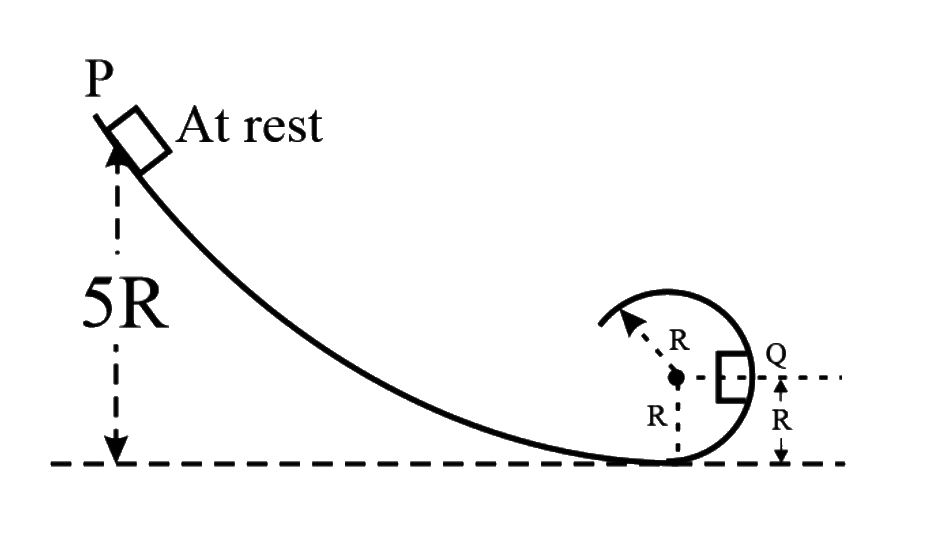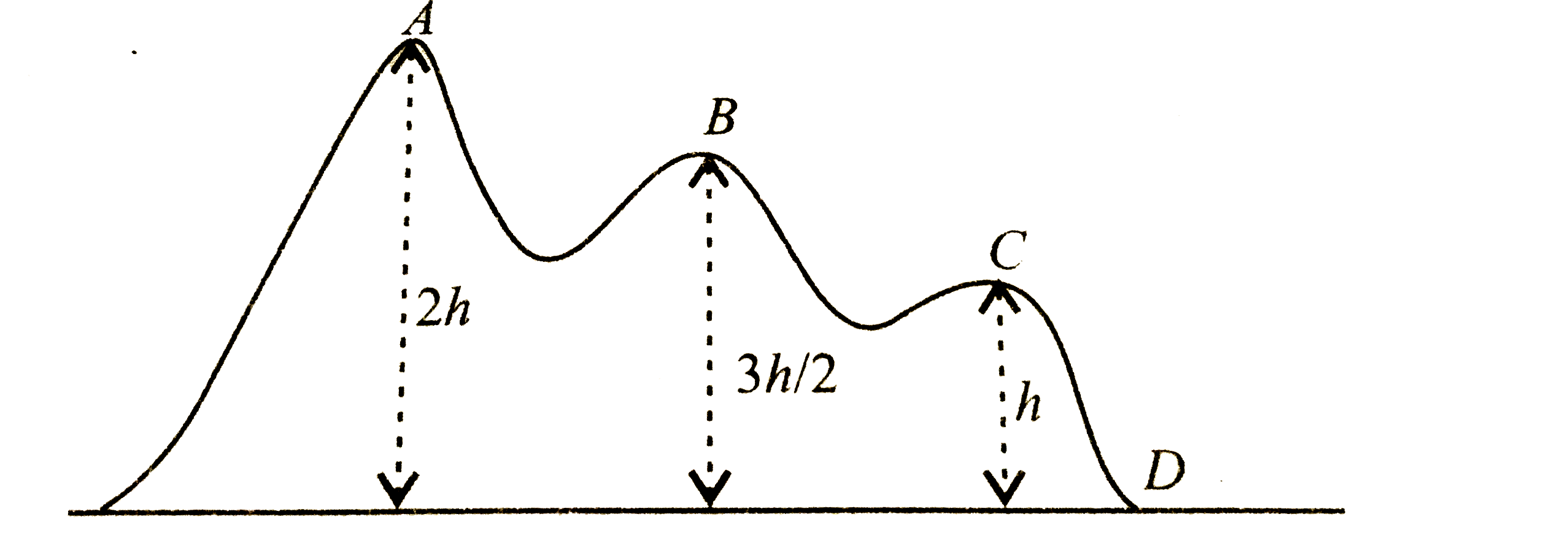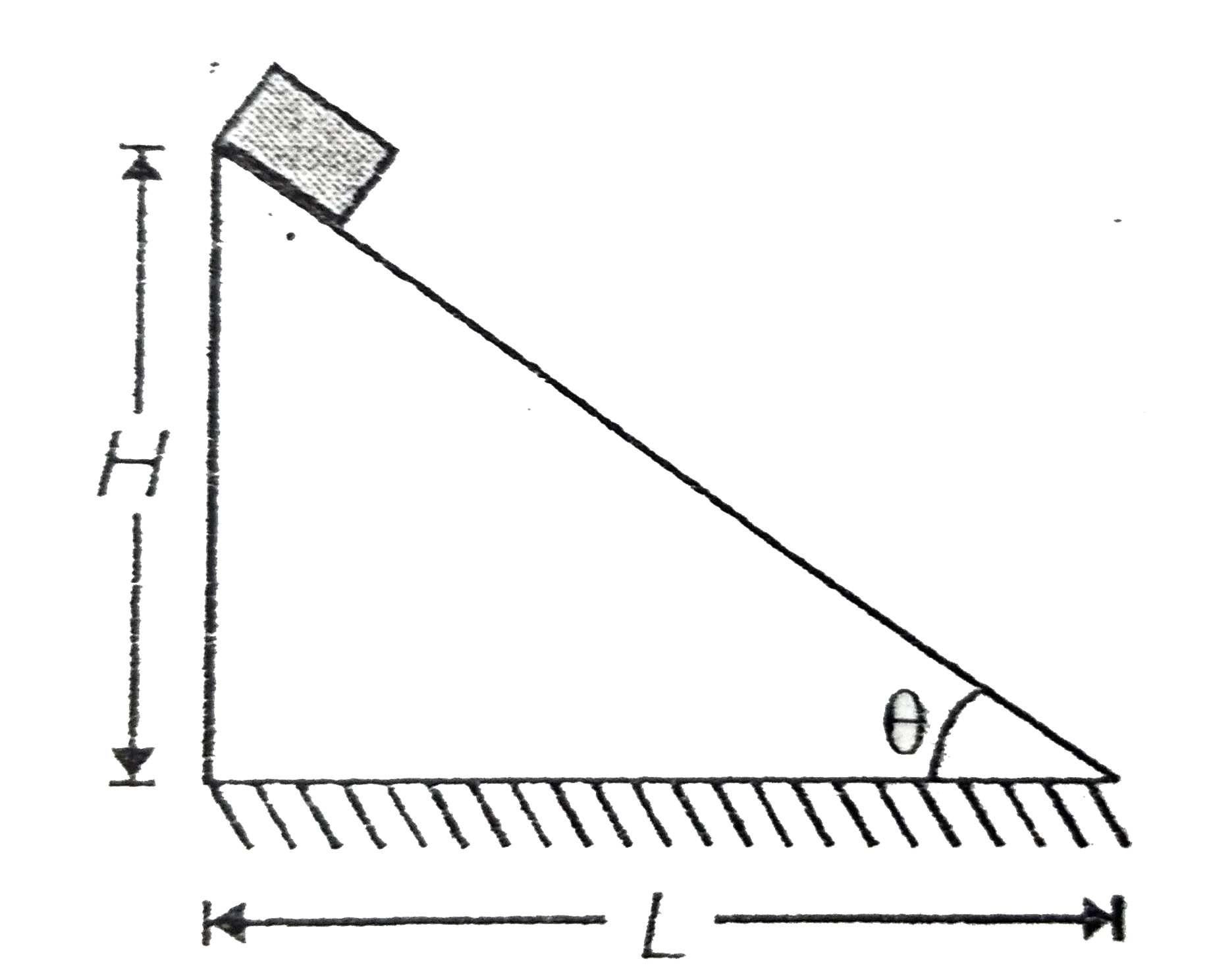A point paticle of maas m, moves along the uniformly rough track PQR as shown in the figure. The coefficient of friction between the particle and the rough track equals μ. The particle is released from rest from the point P and it comes to rest at a point R. The energies lost by the ball, over the parts PQ and QR of the track are equal to each other and no energy is lost when particle changes direction from PQ to QR . the values of the coefficient of friction μ and the distance x(=QR) are respectively close to

0.2 and 6.5 m
0.2 and 3.5m
0.29 and 3.5 m
0.29 and 6.5 m
The correct Answer is:C
As the energy lost over PQ and QR are equal
2μmgcosθ=μmgx…..(1)
∴x=2cotθ=2cot30∘≈3.5m
For work-energy theorem
mgh−2μmgcotθ−μmgx=0
or, mgh−4μcotθ=0 [using (1)]
∴μ=h4cotθ=24cot30∘=12√3≈0.29
Topper's Solved these Questions
- WORK AND ENERGYBOOK - CHHAYA PUBLICATIONCHAPTER - WORK AND ENERGYEXERCISE - EXAMINATION ARCHIVE WITH SOLUTIONS (AIPMT)
3 Videos
- WORK AND ENERGYBOOK - CHHAYA PUBLICATIONCHAPTER - WORK AND ENERGYEXERCISE - EXAMINATION ARCHIVE WITH SOLUTIONS (NEET)
7 Videos
- WORK AND ENERGYBOOK - CHHAYA PUBLICATIONCHAPTER - WORK AND ENERGYEXERCISE - EXAMINATION ARCHIVE WITH SOLUTIONS (WBJEE)
3 Videos
- WBCHSE QUESTION PAPER -2019BOOK - CHHAYA PUBLICATIONCHAPTER - WBCHSE QUESTION PAPER -2019EXERCISE - SECTION - II ( GROUP -D)
10 Videos
Similar Questions
A point particle of mass m, moves long the uniformly rough track PQR as shown in figure. The coefficient of friction, between the particle and the rough track equals μ. The particle is released, from rest from the point P and it comes to rest at a point R. The energies, lost by the ball, over the parts, PQ and QR, of the track, are equal to each other, and no energy is lost when particle changes direction from PQ to QR.
The value of the coefficient of friction μ and the distance x (=QR), are, respectively close to:

View SolutionA small block of mass m slides along a smooth frictional track as shown in the figure. If it starts from rest at P, what is the resultant force acting on it at Q?

View Solution
Knowledge Check
A point particle of mass m, moves long the uniformly rough track PQR as shown in figure. The coefficient of friction, between the particle and the rough track equals μ. The particle is released, from rest from the point P and it comes to rest at a point R. The energies, lost by the ball, over the parts, PQ and QR, of the track, are equal to each other, and no energy is lost when particle changes direction from PQ to QR.
The value of the coefficient of friction μ and the distance x (=QR), are, respectively close to:
 A(a) 0.29 and 3.5mB(b) 0.29 and 6.5mC(c) 0.2 and 6.5mD(d) 0.2 and 3.5m
A(a) 0.29 and 3.5mB(b) 0.29 and 6.5mC(c) 0.2 and 6.5mD(d) 0.2 and 3.5mA small roller coaster starts at point A with a speed u on a curved track as shown in the figure

The friction between the roller coaster and the track is negligible and it always remains in contact with the track. The speed of roller coaster at point D on the track will beA(u2+gh)1/2B(u2+2gh)1/2C(u2+4gh)1/2DuA small roller coaster starts at point A with a speed u on a curved track as shown in the figure

The friction between the roller coaster and the track is negligible and it always remains in contact with the track. The speed of roller coaster at point D on the track will beA(u2+gh)1/2B(u2+2gh)1/2C(u2+4gh)1/2Du
A small block of mass m slides along a smooth frictional track as shown in the figure. If it starts from rest at P, what is the resultant force acting on it at Q?

View SolutionA small blockofmass 'm' is released from rest at the top of a rough inclined plane as shown The coefficient of friction between the block and inclined plane is 'μ' Using work-energy theorem, find the speed of block as it passes the lowest point.

View SolutionA small blockofmass 'm' is released from rest at the top of a rough inclined plane as shown The coefficient of friction between the block and inclined plane is 'μ' Using work-energy theorem, find the speed of block as it passes the lowest point.

View SolutionA solid cylinder of mass M and radius R rolls down an inclined plane of height h without slipping. The speed of its centre when it reaches the bottom is.
View SolutionA block is released from rest from point on a rough inclined place of inclination 37∘. The coefficient of friction is 0.5.
View Solution
